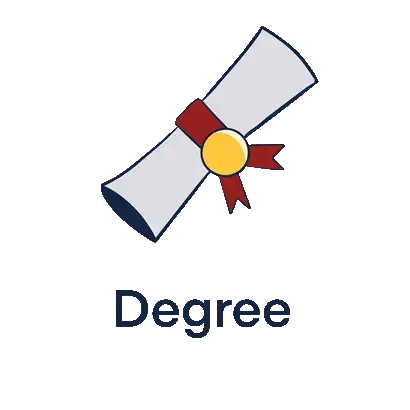How to Pass 13 plus Common Entrance Science (Part 2: Revision and exam technique)
In this blog - the second of a two-part series - Science tutor Phil provides advice on revision methods and exam technique for students sitting 13 Plus Common entrance Science. Once the basics have been mastered, a thorough revision plan and knowing what to expect in the exam will set students up for success.
Once the basic theories, equations and definitions (see my previous blog) have been mastered, it’s now time to focus on exam preparation.
Allow plenty of time for revision and have a clear plan
When it comes to revision, I have always encouraged my pupils to spend quality time preparing for it first. This will pay dividends in the long run and should then help them to make the best use of their revision time. I would encourage them to use highlighters (green, orange, red preferably) and to work their way through a copy of the syllabus, painstakingly point by point. If they are confident and know a specific point already, then this can be highlighted green. Orange can be used if it’s ok but not ingrained yet and red for any points that clearly have not been understood and need more input. They now have a clear starting point for their revision – the red sections need addressing first. Go to the teacher, read through the textbook again, maybe visit an educational website (BBC bitesize is always a good place to start)…do whatever is needed to get things clear!
Find a revision technique, or a combination of techniques, that work best for you (everyone is different in what they find most effective). The following is by no means an exhaustive list of revision techniques:
- Flash cards – write key words on one side with the definition / explanation on the other. Review these regularly, testing yourself as ideas start becoming ingrained. Then get others to test you too;
- Mind maps – like a brainstorm but for each topic. For example, for a topic on nutrition, map out all key points in the topic and make appropriate links between them
- Create tests on specific topics and, working alongside a friend, swap and see if you are able to answer their test;
- Use websites, ie bbc bitesize…
Why not, as part of their revision, get your child to compile their own lists of top 10 pieces of information (or more) for each of the sciences which must then be learnt by heart? Compiling their own individual lists will force them to reflect on the whole course and in doing so they will take ownership of this work. Being given a list from a third party, just won’t have the same effect!
Of course the more exposure to past papers your child has, the more familiar they will be of the style and types of question (obviously slightly differently worded and in different contexts) that keep cropping up. Exam technique is definitely important and when it comes to a 3 or 4 mark question, they need to know what is required to gain those 3 or 4 marks, ie what a good answer looks like.
Perfect good exam technique
1. Never leave a multiple-choice question black
The Level 2 papers always start with multiple choice questions. With these, if there are one or two questions that your child is not certain about, it really is imperative to make a sensible guess at the very least – after all they have a one in four chance of getting it right!
2. Know your ‘fair testing’ and ‘Health & Safety’
Further into the paper, an investigation or experiment is often described in some detail and candidates are expected to be able to do the associated graph work / make conclusions / identify the need for a fair test (see my other blog on fair testing / repeated testing – again this is guaranteed marks if they have learnt the differences) and to state Health & Safety issues and sensible precautions (namely the need to wear eye protection and, potentially, gloves). They will need to be able to apply their knowledge of the particular scientific concept concerned in order to answer many of the questions.
3. Use your time wisely and be prepared to skip a question
As in any exam, there is no point dwelling on a question unduly if it is confusing. Instead, your child needs to move on to the next question which, fingers crossed, they will be able to answer with ease. There will always be a couple of questions included that are trickier, questions that push the brighter candidates and require higher-level thinking. These can be a little off-putting but your child must not let them be! They must be prepared for them, obviously give them a good go, but they mustn’t worry unnecessarily about these – the marks allocated for these are few.
4. Look at the mark allocation for each question
Pupils must ensure that they keep a check on the mark allocation for each question. If it is just a one-mark question, then a simple sentence or one-word answer will be sufficient; there is no need to waste time writing copious amounts. Likewise, for two marks, more will be needed. Pupils should always consider if their particular answer for a question is good enough and detailed enough to earn full marks.
5. Read questions carefully and ensure the answer answers what was asked.
This sounds so obvious but it is surprising the number of stupid mistakes that crop up purely because the question wasn’t read fully or properly and then the candidate failed to check it carefully at the end. It is absolutely paramount that the wording within questions is always carefully read. It is easy to gloss over the detail in some questions which might then lead to the subsequent answer missing the point or not being specific enough (even though often the candidate was more than capable). Some pupils have found it very useful to use a highlighter to highlight key words within the question to help with this.
For example, a ‘describe and explain….’ question means just that – describe what can be seen and then have a go at providing a suitable explanation as to why it is so, based on logic and prior knowledge – this will always earn at least 2 marks. If asked to write about how a particular experiment could be set up, there will be some pointers included – ensure these guidelines are stuck to and include them in the passage; they were stated for a reason! A common Biology question (for 4 marks) asks candidates to write about how they would test whether a leaf contains starch. The question specifically asks them to mention any specific Health and Safety points and the number of pupils, in my experience, who simply omit this is shocking and that’s one mark of the four automatically gone!
6. Spend time checking carefully
If there is time at the end of the paper then it must, categorically, be used to check over the paper. Read questions again and read the answers provided – do they tally with each other? Are the answers sufficient enough? If there are any blanks at this point, have a guess
If the basics have been learnt, with as much understanding as possible (in order to apply ideas to new concepts that may not necessarily have been covered in the classroom), then your child should fare well and pass with flying colours! GOOD LUCK.













Hello,
I am looking for a tutor for my 12 year old son who has a place at st Paul but lately his performance at school has been lacking and I think he could do with some help especially with exam preparation. I would be very interested in taking with you please.
Dear Anju
Thanks for reading. We've just sent you an email with notes as to how we can help.
Best wishes
Owl Tutors